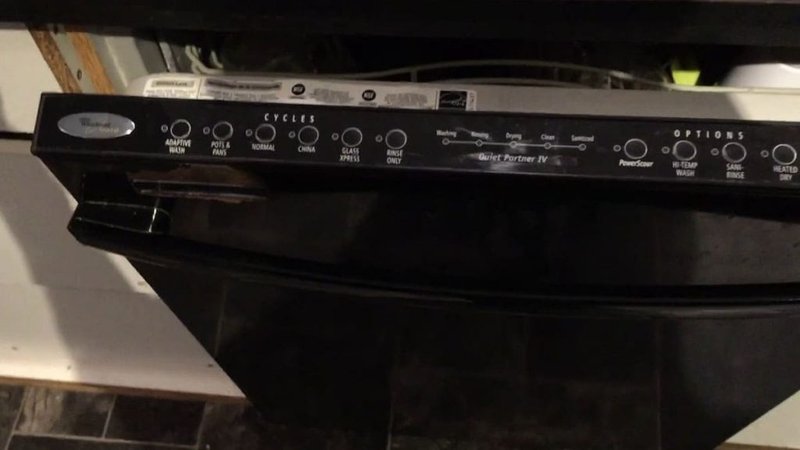
The OE code on a Kitchenaid dishwasher signifies an overflow error, meaning your trusty appliance detected more water than it’s comfortable with. Imagine it like a bathtub that’s filled to the brink—it needs a way to get rid of the excess without flooding your bathroom. Similarly, your dishwasher has sensors to stop water from spilling out when there’s too much. Understanding this can help you troubleshoot and reset your machine, getting it back to diligently washing your dishes without a hitch.
Understanding Error Code OE on Your Kitchenaid Dishwasher
So, what triggers this pesky OE code? It’s like when you’ve packed too much into your suitcase, and it just won’t zip shut—there’s an excessive water situation. Typically, this happens due to an issue with your machine’s water intake or drainage system. It might be that water is not draining properly, or the float switch, which senses water level, is stuck or malfunctioning. But don’t worry; this isn’t something you need a PhD in engineering to handle. Let’s break it down together, step by step.
The first thing to do is check the water level inside the dishwasher. Open the door and peek inside. Is there standing water at the bottom? This points to a drainage issue. Like a clogged sink, debris or food particles could be blocking the path water takes to leave the dishwasher. In many cases, a good cleaning of the filters or the drain hose can solve this problem.
Now, let’s talk about the float. The float is a small device that rises with the water level and tells the dishwasher when to stop filling. If it’s stuck in the “up” position, your dishwasher might think it’s full and stop working properly. Imagine it like a faulty fuel gauge in a car—it’s crucial to know when things are full or empty. You can usually find the float near the front of the tub floor. Gently jiggle it to ensure it’s moving freely. If it feels stuck, cleaning around it or adjusting it could reset the error code.
How to Reset Your Kitchenaid Dishwasher
If you’ve addressed potential issues and still see that pesky OE code flashing, you might need to give your dishwasher a fresh start—a reset. Think of it like rebooting your computer when it’s acting up. Here’s how you can do it safely and effectively.
Start by powering off the dishwasher. Locate the power button on your machine’s control panel—it’s usually somewhere at the top or along the side. Press and hold it for a few seconds until the lights turn off. This is similar to pressing the power button on your computer to shut it down. Once it’s off, unplug the dishwasher from the wall outlet. If the plug is hard to reach, you can simply turn off the circuit breaker that supplies power to the appliance.
Now, let it sit. Just like you might take a break after a particularly tough task, give your dishwasher a moment to relax without power—typically about five minutes. This downtime allows the internal systems to reset and correct any sensor misreads. After the wait, plug it back in or turn the circuit breaker on, and power up the machine. Check if the error code is gone. If it is, congratulations! You’ve successfully reset your Kitchenaid dishwasher. If not, you may want to double-check the float switch or filters again, or consider reaching out to customer support.
Prevention Tips to Keep Your Dishwasher Running Smoothly
To prevent the OE error from rearing its head again, a bit of regular maintenance goes a long way. Imagine keeping your house tidy to avoid an overwhelming cleaning day—spotless is always easier. Start by regularly cleaning the filters at the base of the dishwasher. Like cleaning out the crumbs from a toaster, removing food particles and debris prevents clogs.
Make sure to also inspect and clean the spray arms. These are crucial for washing your dishes but can get blocked by food scraps. Gently remove and rinse them under running water, checking that the nozzles are clear. This ensures your dishwasher delivers water to every corner efficiently, preventing overflow.
Lastly, periodically check the float switch and drain hose. If your dishwasher is like a well-oiled machine, it needs every part working in harmony. Verify the float moves freely and inspect the drain hose for kinks or blockages. By keeping an eye on these components, you minimize the risk of another OE error interrupting your dish-cleaning routine.
And there you have it! By understanding, resetting, and maintaining your Kitchenaid dishwasher, you’ll keep it running smoothly and handle any hiccups with confidence. Happy dishwashing!